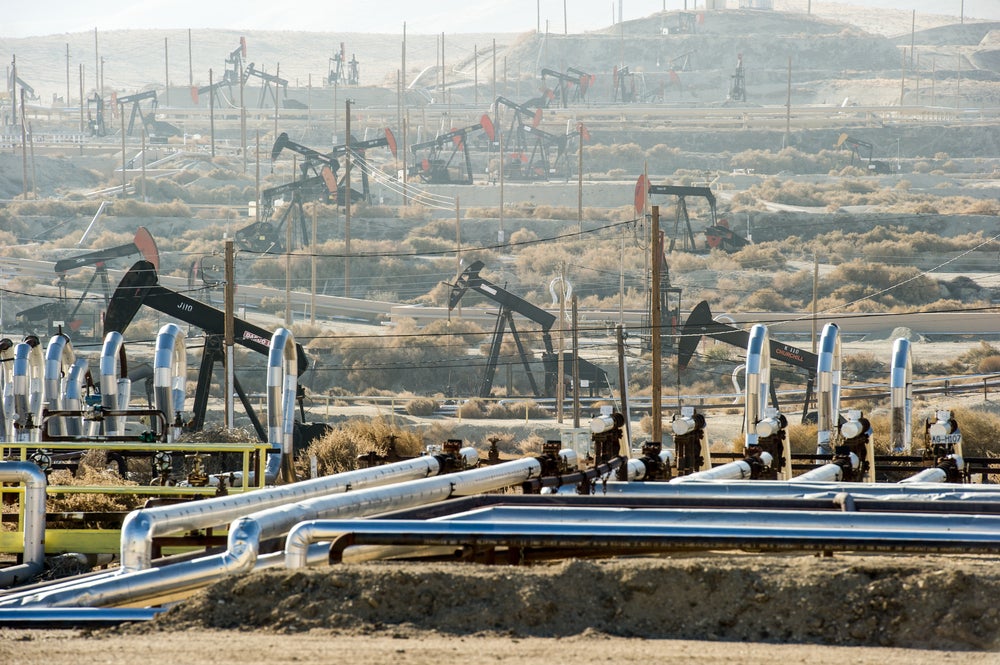Oil and Gas Threat Map Shows At-Risk Populations
A government bureau wants to open up one million acres of central California land to more fracking, but an Earthjustice lawsuit shows that the bureau needs to think before it acts.

This page was published 7 years ago. Find the latest on Earthjustice’s work.
The threat of fracking looms large in California, where the Bureau of Land Management rubber-stamps fracking proposals left and right. But now, an Earthjustice lawsuit will force the bureau to complete an environmental review of fracking on one million acres of grassy hills and plains in central California. The decision overturned a federal plan to leave open this huge tract of land to new oil drilling and fracking, citing impacts to local water supplies and endangered wildlife.
The Bureau of Land Management’s original plan would have allowed more drilling on vast stretches of land in California’s Central Valley and the southern Sierra Nevada mountains, as well as in Santa Barbara, San Luis Obispo and Ventura counties. This court ruling—in response to a lawsuit from the Center for Biological Diversity and Los Padres ForestWatch, represented by Earthjustice—will push the bureau to conduct a full environmental review of the risks of fracking in the area.
While this is a victory for central California, other areas still lie firmly in the shadow of the oil and gas industry. This detailed oil and gas threat map, produced by Earthworks, reveals that an alarming number of populations across the U.S. may be in danger. The map plots the location of oil and gas wells, and highlights the communities, schools and hospitals within a half mile radius of these facilities. It also shows the contribution of air pollution produced by these operations to elevated levels of ozone, or smog, and displays the subsequent number of asthma attacks experienced across the country. This map reveals the sobering truth of oil and gas pollution—the significant health impacts felt across the U.S. due to toxic air.
One of the most dangerous byproducts of oil and gas operations is methane, which traps 87 times more heat in the atmosphere than carbon dioxide in the short-term. Each year, millions of tons of methane, the main component of natural gas, are leaked or deliberately vented into the atmosphere during oil and gas operations. Methane pollution from these operations not only speeds up global warming, but is often accompanied by toxic air pollutants like benzene, formaldehyde and ethylbenzene, threatening the health of citizens living near oil and gas operations.
For Kristi Mogen and her daughter Kylee, air pollution from oil and gas development is no joke. During a trip to Washington, D.C., to educate policy makers, the mother-daughter team shared photos of plants on their farm dying as a result of “flaring” oil wells surrounding their property. This means that the wells were releasing harmful pollution into the air while burning gas. Kylee, who was 14 at the time, said she had a nosebleed for 21 days as a result of toxic air, and subsequent nosebleeds that occurred every couple of days until her family moved. Methane pollution forced the Mogens to flee their home, fearing for their health.
In response to a petition from Earthjustice and our allies, the Obama administration has issued the first nationwide standards to limit methane pollution from new oil and gas facilities, which will also reduce toxic air pollution from the industry—a critical step toward arresting climate change and protecting our health. Advocates are now calling on the Obama administration to extend these protections to existing oil and gas operations, to help people like Kristi and Kylee Mogen. And while Earthworks’ detailed oil and gas threat map may seem frightening, it also points out which communities need our help most, and provides an incentive for change. Air pollution from oil and gas operations is dangerous stuff. Our bodies should not be a dumping ground for dirty industries.
Take Action! Tell the EPA to Fight Fracking Now!
From 2015–2017, Caeleigh MacNeil was part of the Editorial team at Headquarters in San Francisco. She is a graduate of Duke University, where she studied English, journalism and environmental science.
The California Regional Office fights for the rights of all to a healthy environment regardless of where in the state they live; we fight to protect the magnificent natural spaces and wildlife found in California; and we fight to transition California to a zero-emissions future where cars, trucks, buildings, and power plants run on clean energy, not fossil fuels.